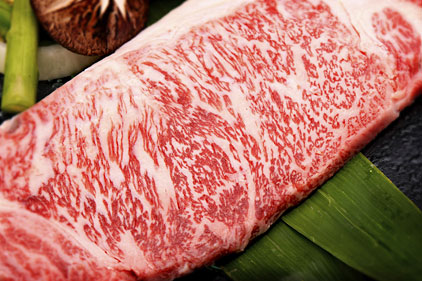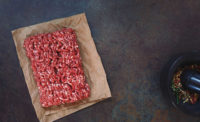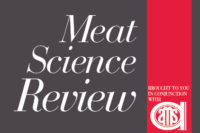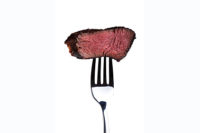Meat Science Review: Marbling still drives U.S. consumer beer-flavor preferences

|
The 2011 National Beef Quality Audit showed that beef retailers and foodservice operators identified beef flavor as the primary attribute of importance when defining eating satisfaction. Many agree that the superior flavor of beef is responsible for the resiliency of beef demand, despite record high beef prices. |
Recently, with funding from The Beef Checkoff, a study was conducted to identify consumer preferences for different types of beef based on flavor. Some 335 consumers representing the Western, Central and Eastern regions of the U.S. and a wide age demographic were asked to rank, in order, 10 considerations when purchasing beef. The consumers in this study ranked these considerations in the following order: 1) taste/eating experience; 2) visual appearance; 3) marbling level; 4) USDA quality grade; 5) nutrient content; 6) breed of animal; 7) where and how the animal was raised; 8) use of growth-promoting technologies; 9) brand of product; 10) grass- vs. grain-fed. These findings underscore the importance of taste and eating experience along with the marbling level and grade of beef, while less emphasis is placed on considerations related to animal production and marketing claims.
In order to establish shares of preference for beef available in the U.S. marketplace, expressed as a percentage of consumers who desire a specific product, the same 335 consumers were served eight beef samples representing eight uniquely different beef categories and/or production differences. The eight samples served represented the following descriptions: 1) U.S. Grass-Fed Beef, 14 day wet-aged (USGF); 2) Uruguayan Grass-Fed Beef, 56 day wet-aged (URGF); 3) USDA Select, 14 day wet-aged (SELECT); 4) USDA Commodity Choice, 14 day wet-aged (small marbling score; CHOICE); 5) Premium Choice, 14 day wet-aged (modest and moderate marbling scores; PCH); 6) Premium Choice, Dry-Aged Beef, 14 day wet-aged and 21 day dry-aged (DRY); 7) USDA Prime, 14 day wet-aged (PRIME); 8) USDA American Wagyu, 14 day wet-aged (slightly abundant marbling; WAGYU).
Each of these samples was served to consumers as a pan-grilled ground beef patty to ensure a similar texture, allowing consumers to solely focus on the beef flavor of each sample. The trimmings that were ground were exclusively from the longissimus dorsi muscle isolated from strip loins with all of the exterior fat and connective tissue removed. This procedure was used to identify the preference for flavor exclusively in steak cuts, while removing the consideration of tenderness by consistently grinding each product.
The samples were served in nine separate sessions in a random but balanced order, so that each sample was equally compared to all others. In each session, consumers were asked to choose their most and least favorite sample. From the consumer responses, the investigators in this study were able to establish a share of preference for each beef type. The likelihood or share of preference, in order, for beef of various production methods was determined to be 20.2 percent for WAGYU, 15.6 percent for PCH; 14.7 percent for PRIME; 13.7 percent for DRY, 12.5 percent for CHOICE, 11.9 percent for SELECT, 6.8 percent for USGF, and 4.5 percent for URGF. Each share of preference was found to be statistically different (P < 0.05) from one another.
These data indicate that U.S. beef consumers have a strong flavor preference for marbling, with 50.5 percent of preference being accounted for by WAGYU, PCH and PRIME beef samples. In this study, WAGYU beef, which also had the highest fat percent, was ranked the highest, while PCH beef was more preferred (1 percent) than PRIME. Also, wet-aged PCH beef was more preferred than dry-aged beef of the same grade (DRY). Alternately, grass-fed samples were the least preferred, but USGF and URGF samples additively accounted for 11.3 percent of preference, indicating that more than 10 percent of consumers prefer the flavor of grass-fed beef products. These data also indicate that there is at least some preference and market share for each type of beef that is produced.
Looking for a reprint of this article?
From high-res PDFs to custom plaques, order your copy today!





